historic preservation new england
See our blog for new projects, announcements, and all things TMS Architects & Interiors.TMS Cofounder John Merkle Named 2025 NH Preservation Achievement Award Winner
Last night was a special evening. We celebrated one of our cofounders, John Merkle, and his winning of a 2025 Preservation Achievement Award through the New Hampshire Preservation Alliance at the beautiful Tilton School. John dedicated over 45 years of his life to helping preserve and revive many of New Hampshire’s historic sites, with highlights including the Wentworth by the Sea Hotel, the Portsmouth Music Hall, and Bridges House in Concord.

From L to R: Principal Architect Jason Bailey, TMS Cofounder John Merkle, Principal Architect Shannon Alther.
Along with his professional contributions, John’s volunteerism is also outstanding, as he has served as a president of the New Hampshire chapter of the AIA, as well as chair of his hometown Exeter Historic District Commission, among other endeavors.

John received his award from leaders of the NH Preservation Alliance.

Tilton School’s Fred A. Smart Chapel, where the award ceremony was held.
We are so happy to see his hard work and dedication recognized and spend time reflecting on the past 41 years of TMS with one of its founders. Congratulations to John and thank you for the foundation that you laid for the TMS legacy!
Historic In-Town Home Renovation
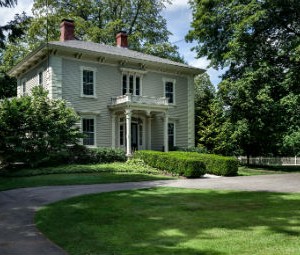
The new owners of this historic residence wished to retain its formal aesthetics but recognized that their young and energetic family needed some additional casual space. The kitchen and the spaces in the rear ell did not meet the owners’ needs and the second floor master bedroom also served as access to the second floor spaces in the rear ell. All bathrooms were antiquated and the home also lacked direct exterior access to the large back yard and swimming pool.
 Read More
Read More
Step Inside Dover, NH’s, Oldest House
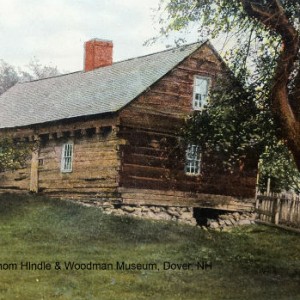
After taking a breather from the publication of his latest book, Smuttynose Murders, and spending some time on the Isle of Shoals, local historian, J. Dennis Robinson returns to the pages of TMS Architects’ blog, with a piece on Dover’s Woodman Museum. There is still time to visit this wonderful piece of New Hampshire history before school vacation ends!
 Read More
Read More
Create the Outdoor Room Your Garden Desires this Summer
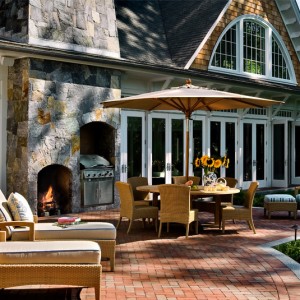
Outdoor rooms and gardens are the perfect way to extend your home to the outdoors. Whether you have an existing garden in which you plan to create a living space or you are starting with little to no landscaping, design options abound that will allow you to make the most of your outdoor space for relaxing or entertaining.
 Read More
Read More
History Wins One on State Street
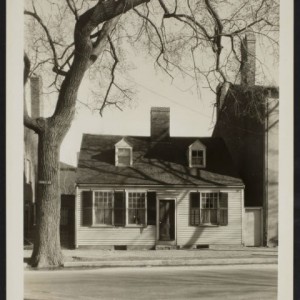
Just when we least expect it, a new blog post for TMS Architects arrives from our guest historian, J. Dennis Robinson. The subject of this one was timely as it had been in the local papers and was wonderful to get more information about this particular building on State Street in downtown Portsmouth.
 Read More
Read More
A Beacon Hill Beauty
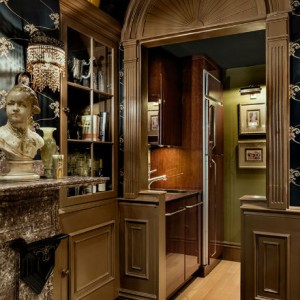
In a delightful departure from some of TMS Architect’s other projects, TMS Principal Bill Soupcoff had an opportunity to work with long-time clients on the renovation of their Beacon Hill pied a terre. The couple are owners of a successful inn on the seacoast of New Hampshire and wanted a small apartment in Boston where they could decompress and enjoy the cultural opportunities offered by the city.
 Read More
Read More
Control Rain Runoff with Landscaping Design
Rooftops, pavings, and other hardscapes can negatively affect landscapes and the environment. An unfortunate side effect of these impermeable surfaces, rain runoff, can deprive garden beds of natural irrigation and prevent groundwater tables from replenishing. It can cause erosion, slides, and even flash floods. Stormwater can pick up contaminates and lead to increased pollution of streams, rivers, and oceans.
 Read More
Read More
Portsmouth’s Forgotten Textile Industry
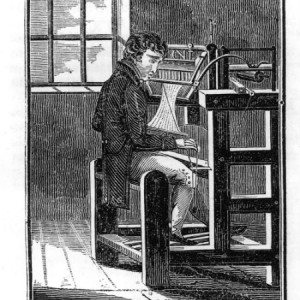
TMS always learns something interesting about Portsmouth when we publish a post from J. Dennis Robinson, our guest historical contributor. Last time we learned about the building that presently houses our offices when it was part of the Eldredge Brewing Company ; this time we learned more about its earlier history in the textile industry.
In our last history installment we learned that the site of the modern TMS Architects offices was once a brewery. Heman (not Herman) Eldredge and his sons ran the Eldredge Brewing Company on the same spot off Bartlett Street in the second half of the 19th century. Although their brew, including Portsmouth Ale, was hugely popular, the Eldredge brand was drowned out by the even greater success of the Frank Jones Brewery just across the tracks in the city’s West End.
But there’s more. The brewery was built on the site of an equally important, but now forgotten, textile factory. Yes, during the 1800s, Portsmouth was also known as a key city for the production of stockings. Who knew?
 Read More
Read More
Harness the Power of Passive Energy in Home Design
Passive home designs work with the environment rather than against it. By taking advantage of location, orientation, and local climate, a passive home is designed to maintain comfortable temperatures while reducing energy consumption.
 Read More
Read More
Building with Reclaimed Brick & Green Advantages
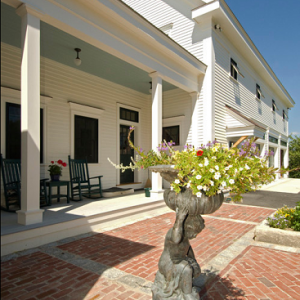
Sustainable building materials can be just as beautiful and functional as they are eco-friendly. As more and more homeowners and builders go green, brick masonry construction is becoming an important player in green building and sustainable home design. This is because bricks are inherently green and result in gorgeous structures that last for generations to come.
 Read More
Read More
Cedar Siding Shingles Provide a Rustic, Country Look
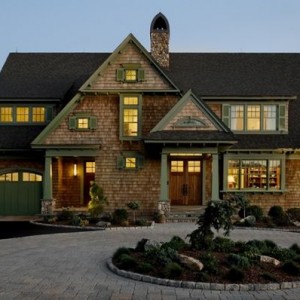
The photo we pinned of the exterior of our project called the New Hampshire Hilltop Home has been pinned to multiple Pinterest boards. The well-liked pin has us pondering wooden shingles, and the way they exude both a historical and modern look.
 Read More
Read More
Utilize Rainwater Harvesting for Sustainable Living
Saving water (and money) is easy with a residential rainwater harvesting system. Rainwater is great for watering all gardens and plants, including edible ones. The two most common home rainwater harvesting systems are rain barrels and cisterns. Rain barrels are easy to install and use and do not require any type of permit. Large cistern systems that hold more than 100 gallons and involve pumps will warrant the help of a professional to obtain the proper permits.
 Read More
Read More
TMS Wins Best of Houzz 2015
Houzz has become a go-to resource for homeowners, designers, and home improvement professionals. It’s a place for finding design inspiration and opportunities to collaborate. It’s a place for finding the right professionals for a home design or renovation project. It’s a place for designers and home improvement experts to showcase their work. Houzz has rapidly expanded to become one of the world’s leading online platforms for home remodeling and design with a community of over 25 million design enthusiasts, professionals, and homeowners.
 Read More
Read More
Modern Designs That will Help an Old Fireplace Standout Again
Has the fireplace in your home seen better days? Do you have a historic home that needs a pop of new life as the weather cools off? If you’re still staring at that old, plain fireplace with a grimace, you can get an architect to give it a face-lift. But until you find the right architect to work with, view a few of these fireplace designs for a bit of inspiration.
 Read More
Read More
Enhance a Historic Home with Garden Lighting
When you have great focal points in your landscape, garden lighting will help draw the eye and showcase these features. Your home’s first impression is reliant on its curb appeal, which includes a beautifully landscaped yard, a well-kept exterior and attractive lighting to enhance an historic or modern home. Not only will you impress your guests with stunning lighting, you’ll also increase your home’s resale value.
 Read More
Read More
Light up a Historic Home with Contemporary Lighting
Historic homes generally don’t have a lot of natural light, but this is all part of the charm that draws us to them in the first place. With the vast choices available today, it’s possible to bring modern lighting into a historic home without compromising the architecture’s character.
 Read More
Read More
Upgrading a Historic Home with Energy-Efficient Lighting
In an era where energy-efficiency is at the forefront of everyone’s minds, when it comes to lighting a home effectively, modernizing the lighting in an historic preservation can be a challenge for both the homeowner and the architect. In order to protect the integrity of historic preservation in New England, finding a balance between the natural daylight and historic light fixtures with modern upgrades is essential.
 Read More
Read More
Historic Preservation: Keeping History Alive
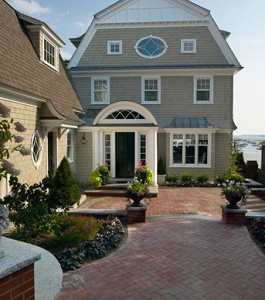
Historic preservation is about more than keeping a beautiful building alive; it’s about strengthening our present community by remembering and honoring our past. It gives us the opportunity to not only tell our children and grandchildren about the places that made us the people and community we are today, but to show them in person.
 Read More
Read More
Is This Obelisk Architecture?

J. Dennis Robinson, historian and TMS Architects’ guest blogger, brings us an interesting piece today about Edward Tuck, founder of the first graduate school of business at Dartmouth, and leaves us with an interesting question to ponder…is an obelisk architecture? Read on and let us know what you think!
 Read More
Read More
A Guide to Colors for Historic Homes
Preserving the history of a period home requires special knowledge of the architectural era during which it was built — from design practices and traditions to decorative approaches and popular accents and touches. If your home holds a particularly important architectural pedigree, even the specific shade of color employed in the home’s exterior and interior design becomes integral to honoring its original character.
 Read More
Read More
